The seeps and cold, fast-flowing headwater streams in the Andrews Forest are home to one of the Pacific Northwest's most charismatic, and yet little understood, species: the Cascade torrent salamander (Rhyacotriton cascadae). The entire family is endemic to the PNW, and two of the four species are currently being considered for listing under the Federal Endangered Species Act. These salamanders are biphasic, with a larval form that can take up to 5 years to metamorphose into a terrestrial form that is still highly sensitive to desiccation and changes in temperature. Despite this, the salamanders can be found in intermittent streams, as they are thought to utilize the hyporheic zone, where groundwater and subsurface stream water mix. The impacts of climate change will likely result in a significant reduction in available habitat to the salamanders, and their ability to disperse to suitable aquatic environments will be crucial to their long-term survival. A landscape genomics study at the Andrews Forest is focused on answering several questions: Is movement tied completely to streams, or do adults cross forest and ridges to move between streams? What does dispersal look like within, between, and among stream networks? What landscape features facilitate or impede movement?
Graduate student Christopher Cousins is leading the study. He shares: “Our project was cut short due to the Lookout Fire, but we are hoping that our existing samples and data will be able to address our questions. As part of our sampling, we visited sites affected by the 2020 Holiday Farm Fire. Although the burned sites looked rough, we were able to find multiple torrent salamanders at streams impacted by the fire, by searching deep in the stream substrate. We found salamanders of multiple age classes, indicating that not only did salamanders survive the fire, but that reproduction had occurred since. It's likely that torrent salamanders can weather fire events by moving vertically in the stream, using the same strategy they use to live in intermittent streams. Although my heart aches for the Andrews and the forest as it burns, knowing that Cascade torrent salamanders will ride out the fires in subsurface refugia provides a sense of relief.”
Check out Christopher Cousins’ Instagram to see his stunning, up-close images of salamanders and other wildlife.
First posted September 22, 2023


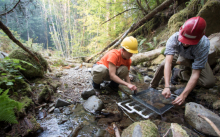
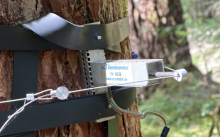

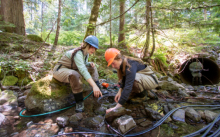
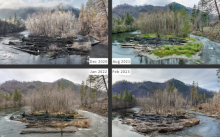

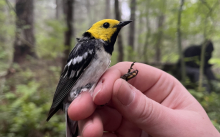

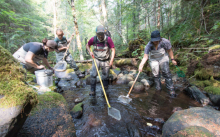
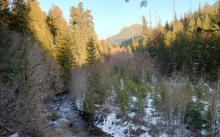


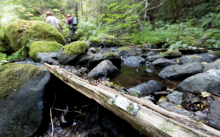
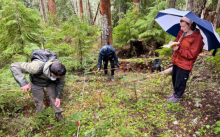
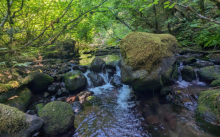
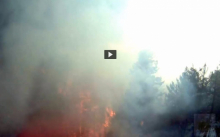
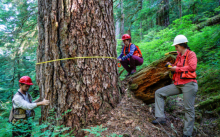




 This photo was taken from the Roswell Point meadow on August 2, 2023. It is looking across the upper Lookout Creek at the N side of Lookout Mountain and Lookout Ridge, where the fire is currently burning. It may be one of the last photos taken of the north side of Lookout Mountain before the fire ignited on August 5. Smoke from the Bedrock fire is visible in the distance. Photo from
This photo was taken from the Roswell Point meadow on August 2, 2023. It is looking across the upper Lookout Creek at the N side of Lookout Mountain and Lookout Ridge, where the fire is currently burning. It may be one of the last photos taken of the north side of Lookout Mountain before the fire ignited on August 5. Smoke from the Bedrock fire is visible in the distance. Photo from